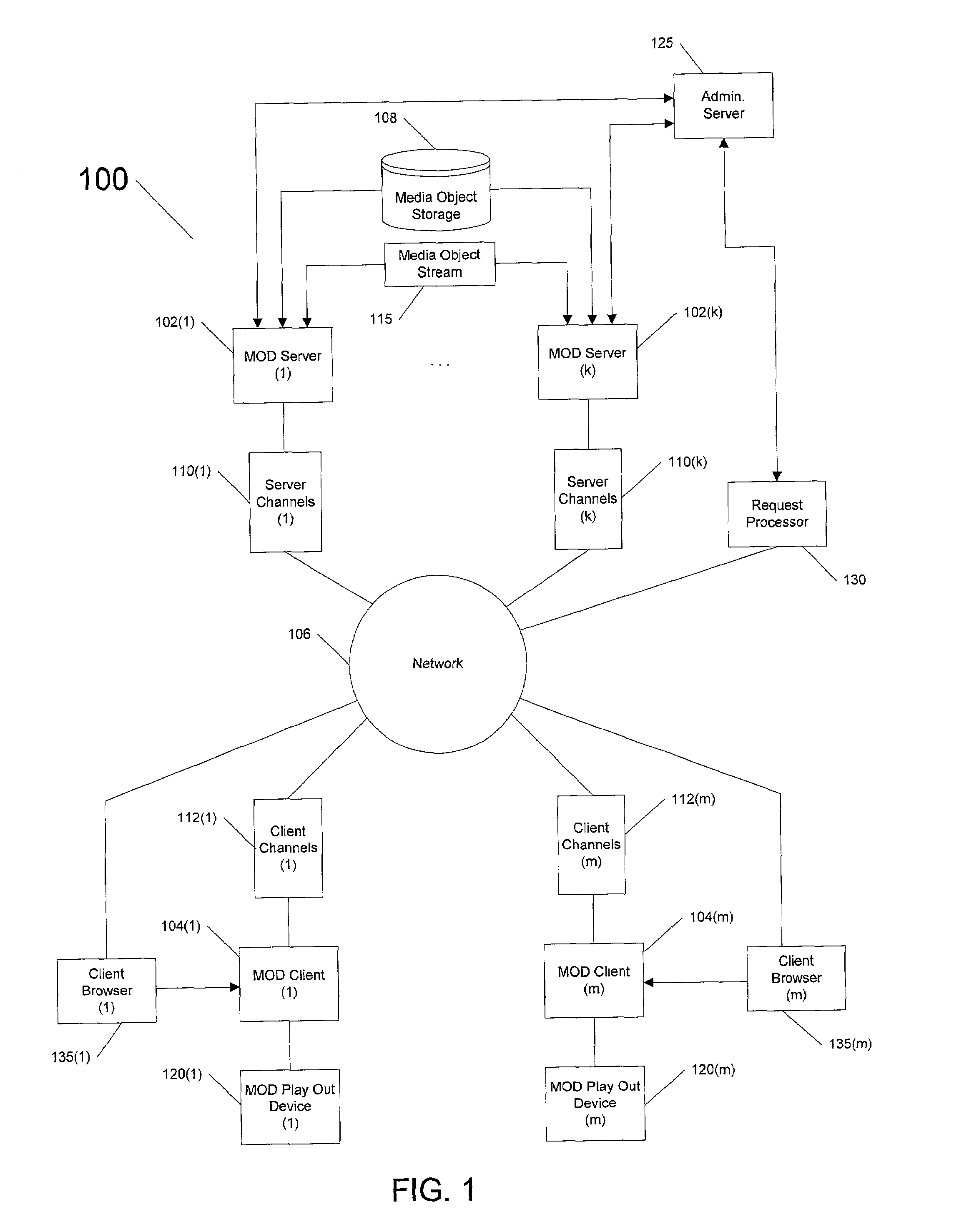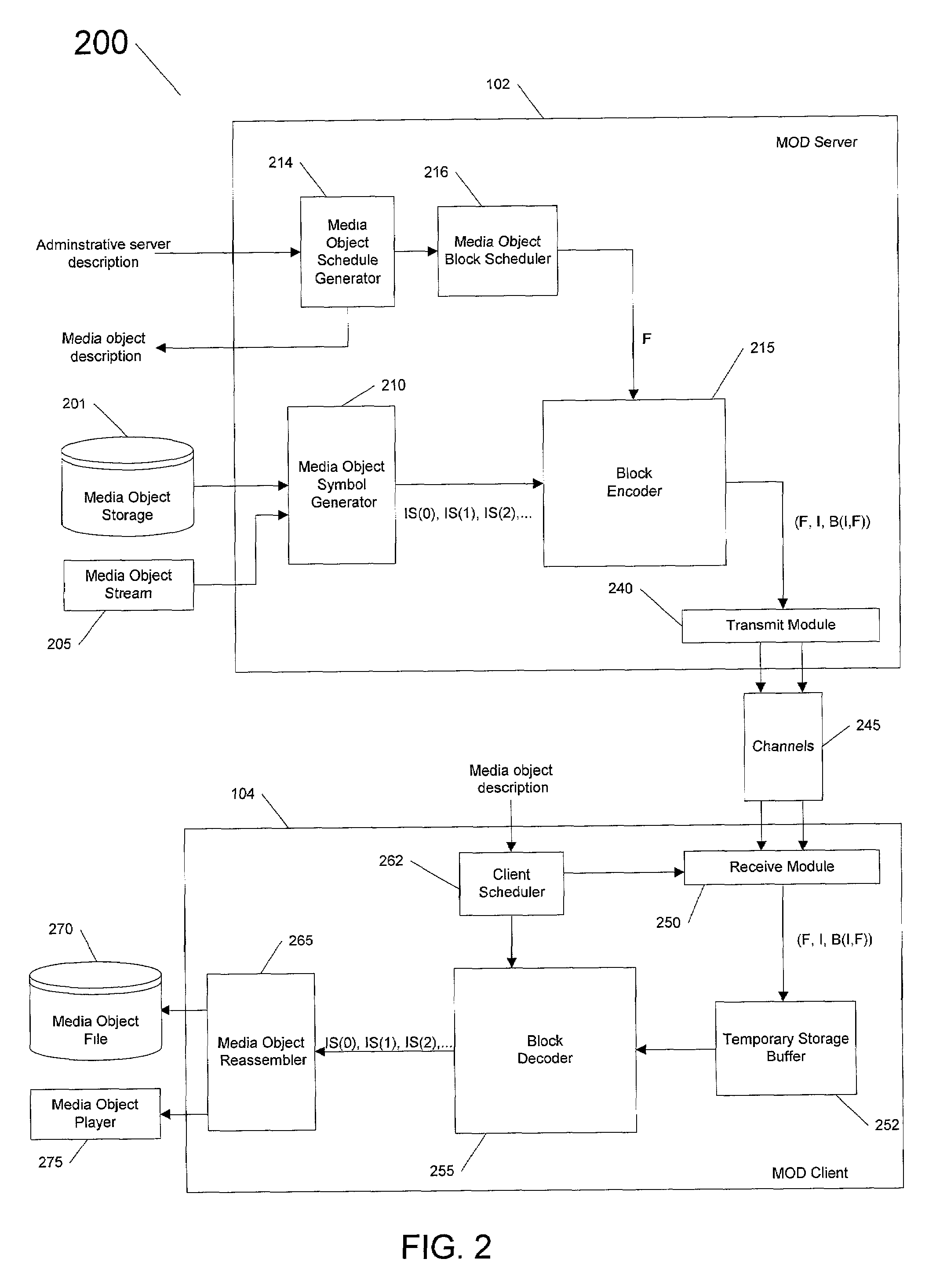Methods and apparatus for scheduling, serving, receiving media-on demand for clients, servers arranged according to constraints on resources
- Summary
- Abstract
- Description
- Claims
- Application Information
AI Technical Summary
Benefits of technology
Problems solved by technology
Method used
Image
Examples
Embodiment Construction
[0042]The present disclosure references the following applications, the entire disclosures of which are herein incorporated by reference for all purposes:
[0043](1) U.S. Pat. No. 6,307,487 (U.S. patent application Ser. No. 09 / 246,015, filed Feb. 5, 1999 and entitled “Information Additive Code Generator And Decoder For Communication Systems”) (“Luby I”);
[0044](2) U.S. Pat. No. 6,320,520 (U.S. patent application Ser. No. 09 / 399,201, filed Sep. 17, 1999 and entitled “Information Additive Group Code Generator And Decoder For Communication Systems” (“Luby II”);
[0045](3) (U.S. patent application Ser. No. 09 / 587,542, filed Jun. 1, 2000 and entitled “Dynamic Layer Congestion Control for Multicast Transport” (hereinafter “Dynamic Layering Application”);
[0046](4) U.S. Pat. No. 6,486,803 (U.S. patent application Ser. No. 09 / 668,452, filed Sep. 22, 2000 and entitled “On Demand Encoding With a Window” (hereinafter “Windowing Application”);
[0047](5) U.S. Pat. No. 6,411,223 (U.S. patent application...
PUM
 Login to View More
Login to View More Abstract
Description
Claims
Application Information
 Login to View More
Login to View More - R&D
- Intellectual Property
- Life Sciences
- Materials
- Tech Scout
- Unparalleled Data Quality
- Higher Quality Content
- 60% Fewer Hallucinations
Browse by: Latest US Patents, China's latest patents, Technical Efficacy Thesaurus, Application Domain, Technology Topic, Popular Technical Reports.
© 2025 PatSnap. All rights reserved.Legal|Privacy policy|Modern Slavery Act Transparency Statement|Sitemap|About US| Contact US: help@patsnap.com



